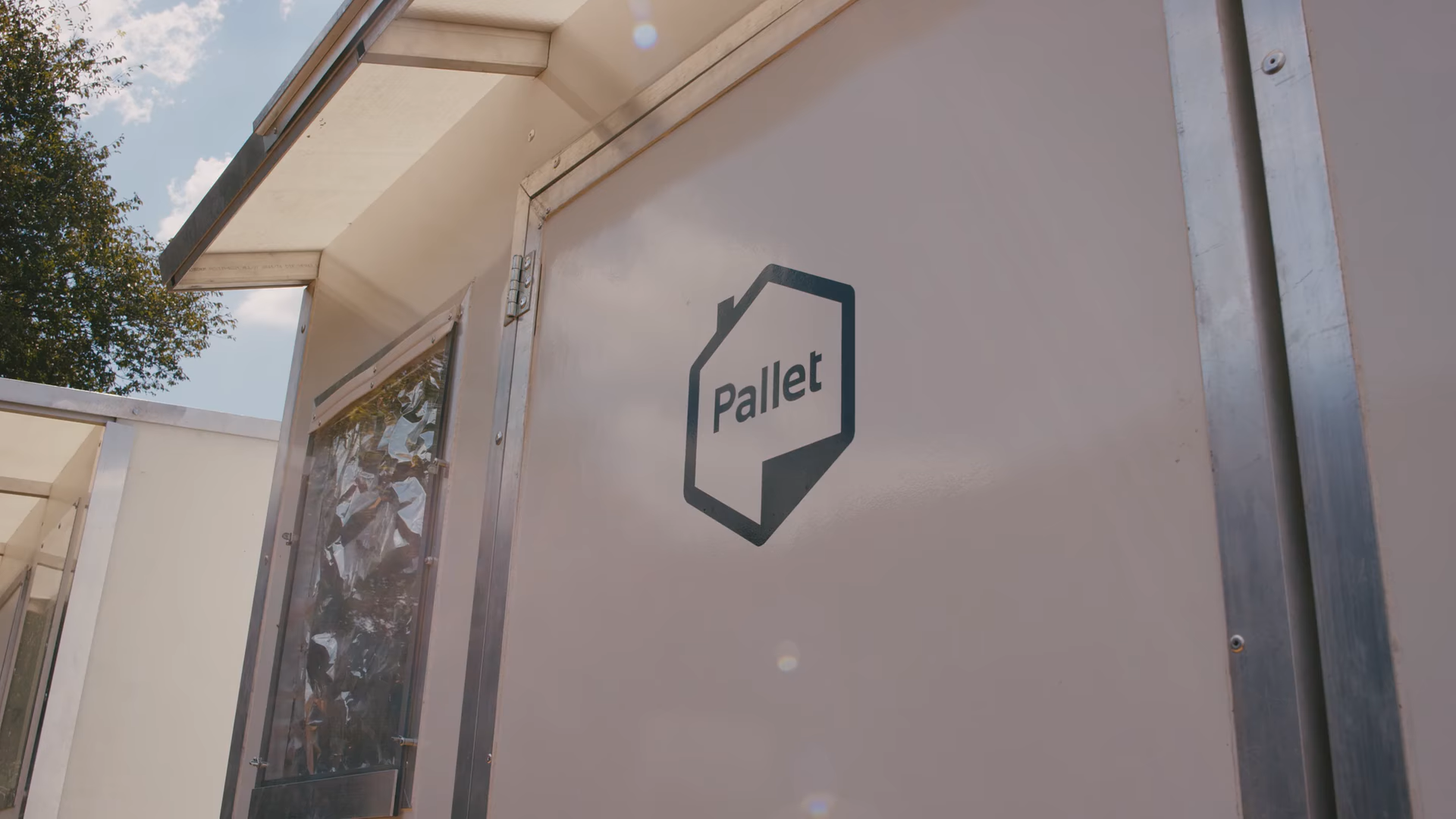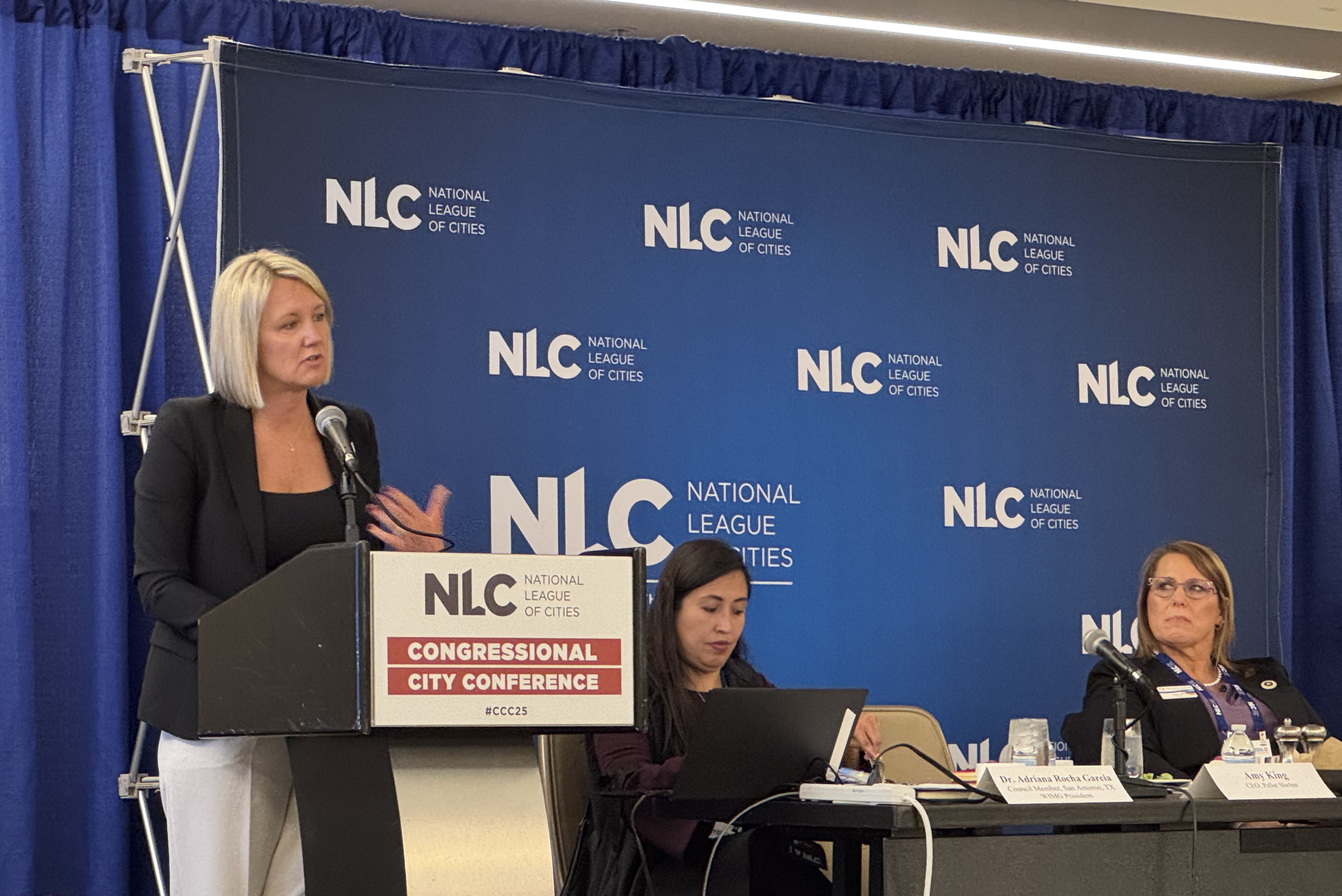3 Reasons We Designed Our Shelters Without Bathrooms
February 13, 2020
It’s one of the more common questions we hear:
Why don’t your shelters have bathrooms? We all need to use the bathroom throughout the day, and isn’t it wrong to deny someone a space to do so?
Pallet’s personal, dignified shelters include a long list of features and benefits for their residents, from climate control with heat and air conditioning, to a locking door so residents can securely and safely leave their belongings while at work, accessing services, or elsewhere.
A bathroom, however, is not on that list of features – but we agree that it’s wrong to deny someone the facilities to use a bathroom. That’s why our shelters villages are intentionally designed to be used in a community setting with private shared bathroom facilities on site.

Make no mistake, Pallet shelter communities must include shared bathroom and shower facilities on premise. Just because there are no bathrooms within the shelters doesn’t mean that there won’t be bathrooms on site. This shared bathroom concept isn’t new – communal bathroom facilities are commonly used across America in summer camps, college dormitories, national parks, and a long list of other locations that nearly everyone considers to be humane.
When we set out to design the very first Pallet shelter, there were three reasons we designed our shelters without bathrooms:
Reason #1: Shelters without restrooms are faster, easier, and more cost-effective for cities and human service agencies to build.
At Pallet, we’re advocates for action and compassion. That’s why we’re building rapid, personal shelters in cities across America, increasing the number of people who can access shelter. Hundreds of thousands of people are sleeping on the street every night and need access to some form of shelter. While there are many thoughts on how to reduce the barriers to traditional housing long term, the reality for the hundreds of thousands of people facing homelessness is that they need a place to stay tonight.
For cities that want to take action and provide shelter to their residents experiencing homelessness as fast as possible, a common bathroom facility is much faster and easier to establish than building the plumbing infrastructure for individual shelters in a large community setting. This reduces the time required to shelter people from months or years to days or weeks.

Without bathrooms, Pallet’s personal shelters require no plumbing into the shelter. This dramatically reduces the costs and amount of time required for setup – a team of three can set up a Pallet shelter in as little as an hour without tools.
Another benefit is cleaning and maintenance. When it’s time to clean the bathroom, a custodian team or site manager doesn’t need to disturb shelter residents to schedule and clean personal bathrooms. A communal bathroom facility is much easier to maintain and clean.
Reason #2: Improved outcomes for shelter residents.
Shelter is a vitally important element of reducing homelessness, but shelter alone is just one piece of the solution. The real magic in reducing homelessness comes in the days, weeks, and months after someone gains access to stable, dignified shelter – when they personally begin to build a community of support, just like the community you have in your family, neighborhood, and other networks. Combined with social services, this community becomes their network of care, which is proven to help the homeless achieve stability and reduce relapse.
Building our shelters without bathrooms is a subtle way to encourage community building among residents. When shelter residents need to use the restroom, they need to walk to the communal facility, interacting with their neighbors on the way.
“If you gave me the keys to a home when I was homeless, I might have locked myself in my house and stayed there until I relapsed and overdosed,” said an early employee at Pallet who helped to design our shelters – this employee experienced homelessness prior to working at Pallet. “If you place things like the bathroom, the dining hall, and social services outside my home, I’ll walk outside and meet my neighbors.”
Reason #3: A shelter with a communal bathroom is more humane than a tent without any bathroom.
The fact of the matter is that people who are experiencing homelessness right now don’t have a bathroom or shower at all.
For people who have a traditional home with a personal bathroom, a shelter without a bathroom may seem less humane than what they’re accustomed to in their own home. Considering the same shelter and communal bathroom from the perspective of people experiencing homelessness, a shelter community with a communal bathroom, kitchen, and social services is a significant improvement over a residence in a tent, under an overpass, or in a similar homelessness environment.
At Pallet, we believe that access to appropriate restrooms is a necessary element for all homelessness response solutions – and that a communal bathroom satisfies that need, while providing additional benefits for the community’s population.


